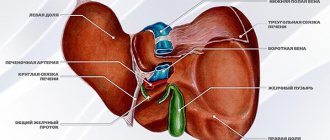The key functions of the gastrointestinal tract (gastrointestinal tract) are food processing, extraction of nutrients from it, formation and disposal of waste. In the complex mechanism of metabolism, the process of digestion is the starting point.
It consists of several stages during which products are subjected to mechanical and chemical stress. The primary responsibility for processing food lies with the small intestine, but without pre-processing food in the mouth, pharynx, esophagus and stomach, this process would not be possible.
How much food is digested in the stomach depends on its characteristics (composition, processing method, texture, etc.) and the individual characteristics of the body.
What are easily digestible foods?
If after a hearty lunch or dinner you want to sleep, then most likely the menu contained foods that the body spent a large amount of energy processing. How can you change the situation?
Nutritionists recommend two ways to solve this problem:
- selection of products that go well with each other, which reduces the time and amount of energy the body needs to process them;
- selection of easily digestible products.
Nutritionists divide all foods into groups depending on the time of digestion:
- carbohydrates, broths, juices, fresh vegetables and fruits – processing takes no more than 45 minutes;
- proteins, fats: milk, eggs, poultry, lean fish - about 2-3 hours;
- foods high in starch and complex carbohydrates, such as cereals, potatoes, cottage cheese, nuts, legumes, hard cheeses - more than 4 hours;
- The foods that take the longest to digest or are not digested at all are coffee, canned food, pasta and baked goods, mushrooms, and fatty meats.
Absorption time for some foods:
| Name | time |
| water | At once |
| juices | 10-30 min |
| raw vegetables: tomatoes, cucumbers, herbs, peppers, lettuce | 1,5 hour |
| boiled vegetables: green beans, zucchini, cauliflower | 40 minutes |
| boiled vegetables: potatoes, pumpkin | 1 hour |
| berries | 30 minutes |
| fruits: pears, apples, apricots, peaches | 40 minutes |
| dairy products | 1 hour |
| homemade cheese | 1,5 hour |
| low fat cottage cheese | 1,5 hour |
| cottage cheese 9% | 2 hours |
| milk | 2 hours |
| grains: buckwheat, oatmeal, pearl barley, peas | 1,5 hour |
| citrus fruits, melon, grapes | 30 min |
The following easily digestible foods are digested most quickly in the body:
- berries;
- vegetables;
- greenery;
- fruits;
- fresh juice;
- low-fat fermented milk products;
- jelly, jelly without artificial colors and flavors;
- cream soup;
- low-fat fish;
- steam omelettes;
- lean meats;
- puddings.
This information will be useful for those who monitor their weight, pregnant women, people suffering from stomach diseases, and parents of small children.
Gastric juice
The juice is secreted by the gastric glands (main, parietal and accessory). In the hungry state, the reservoir contains about 50 ml of a mixture of saliva and juice. The daily amount of gastric juice ranges from one and a half to two liters.
The liquid contains:
- Water (up to 96-99%).
- Hydrochloric (HCl) acid. Hydrochloric acid maintains a stable level of acidity, helps transform the proenzyme pepsinogen into the full-fledged enzyme pepsin, which breaks down proteins, protects the stomach from pathogenic microorganisms, and activates the synthesis of pancreatic secretions.
- Mucin. Insoluble mucus prevents the stomach from self-digestion and protects against negative exocrine effects.
- Enzymes (pepsin, lysozyme, gastrixin, chymosin). The main substances under the influence of which proteins, fats and carbohydrates are broken down and partially digested.
- Salts (HCO3). Bicarbonates neutralize the aggressive effect (HCl).
In the absence of food, the production of gastric juice slows down. The chyme (a semi-solid substance) obtained during biochemical processes is sent to the duodenum using the vagus nerve (vagus). The completion of the digestive process occurs in the intestines.
Which vegetables are easily digestible?
Vegetables are used daily in the diet; they contain useful elements and are easily processed. The body processes green leafy vegetables the fastest. They contain substances that help speed up the digestion process, so it is useful to eat leafy salads as a side dish.
The most easily digestible vegetables:
- asparagus;
- spinach;
- leaf salads;
- carrot;
- beet;
- zucchini;
- pumpkin;
- green bean.
Fruits and vegetables contain a large amount of fiber, which speeds up the digestion process. Therefore, they are considered the most easily digestible foods.
Such different cheeses
To begin with, cheese lovers should understand that cheeses differ not only in fat content and names, but also in preparation technology. The more products are used to make cheese mass, the more difficult it is for the body to cope with its breakdown and absorption. Next comes the division of cheeses into hardness and softness. And for the human stomach this aspect is extremely important.
Types of meat and fish
Meat and fish are essential elements of human nutrition. They supply the body with useful protein, vitamins, and minerals. The fat content of foods determines how quickly they are processed by the body.
Depending on the fat content of the meat, it may take from 2 to 4 hours to process it. So lean beef will be digested in 1-2 hours, and pork in 2-4 hours. The method of preparing dishes also matters.
Briefly about the gastrointestinal tract
The gastrointestinal tract is a complex of digestive organs, on the quality of which human life and health depend. Each section of the gastrointestinal tract is endowed with certain functions:
- Oral cavity. The initial area, including the lips, teeth, gums, tongue, pharynx and salivary glands. Responsible for mechanical grinding (chewing), chemical processing with saliva and identifying the taste of food.
- Pharynx (nasopharynx, oropharynx, hypopharynx). Participates in reflexive contraction and relaxation of muscles to push food through.
- Esophagus. Consists of the cervical, thoracic and abdominal parts. Covers food with a viscous liquid produced by the glands and moves it towards the stomach. A 30-centimeter section of the esophagus ends with a cardiac sphincter (otherwise known as a valve or sphincter).
- Stomach. A hollow tank with a complex structure and designed for storing and processing food, sucking liquids and salts from it.
- Small intestine. A three-component section consisting of the duodenum, jejunum and ileum. To digest foods, it is supplied with gastric and pancreatic juices and bile. Independently synthesizes alkaline secretion. Completes the process of breaking down nutrients and other substances.
- Colon. Includes the cecum, colon and rectum. It is endowed with the functions of absorbing liquid, activating the movement of digested products, forming and evacuating excrement, for which it produces a mucous substance.
All parts of the digestive tract are in close correlation. A single failure can cause a complete disruption of the gastrointestinal tract.
No ads 1
Easily digestible foods for diseases of the stomach and pancreas
Not all easily digestible foods may be suitable for nutrition for diseases of the stomach and pancreas.
So, vegetables and fruits without heat treatment are rich in fiber, and this can injure the mucous membrane of a diseased stomach and negatively affect the pancreas.
Experts recommend consuming the following products:
- white, lean meat;
- baked apples;
- bananas;
- dairy products;
- sea fish;
- rice, buckwheat, oatmeal porridge;
- steamed or boiled vegetables;
- compote, jelly;
- non-acidic berries.
Proper nutrition for a number of diseases can significantly improve a person’s condition.
How to speed up food digestion time?
It is necessary to speed up digestion only when there are problems and the presence of the disease has been confirmed by a doctor. In all other cases, it is better not to interfere with processes regulated by nature itself, so as not to harm yourself with rash actions.
If there is such a need, you can use the following methods:
- a glass of clean water on an empty stomach, maybe with a few drops of natural lemon juice (if there is no heartburn and increased acidity of gastric juice) - this remedy “starts” digestion after a night’s rest;
- a glass of fresh kefir on an empty stomach - does the same thing, only softer (cannot be used by those who do not digest milk well);
- along with heavy and dense dishes, use a lot of seasonings and spices - hot pepper, mustard, pickled ginger or others as desired, spices stimulate the release of digestive enzymes, and things will go faster;
- the temperature of the food should be close to body temperature - too hot food burns the delicate mucous membrane, and cold food does not have time to break down in the stomach;
- during meals, drink a little hot liquid - unsweetened tea or clean water (it is not advisable to drink water after eating, this reduces the concentration of gastric juice and enzymes, digestion is delayed);
- a small “sandwich” of a slice of fresh ginger and salted lemon before eating – the bitterness improves digestion;
- always chew food thoroughly and calmly (read more here) to facilitate the work of subsequent departments;
- eat foods rich in fiber, which accelerates the movement of the food bolus - bran bread, legumes, dried fruits, flaxseed, as well as fruit and vegetable juices.
Read on the topic: Methods for managing appetite and ways to reduce it
Easily digestible foods for children
For the normal growth of children, proper nutrition is especially important, which should provide the growing body with everything necessary. The more varied the menu, the healthier the food. Recently, it is becoming increasingly common to see overweight children.
The main reasons are a sedentary lifestyle and poor diet. As a rule, children receive an excess amount of calories from food. For a child under 3 years old, 1540 kcal is needed, and from 3 to 7, 1970 kcal is needed daily.
Easily digestible foods must be present in the daily menu. Fruits and berries should be eaten every day; they contain a large amount of vitamins and minerals. They contain easily digestible carbohydrates.
Fruits and berries in baby food:
- in its natural form;
- in juices, fruit drinks, compotes;
- in puree.
It is recommended to give preference to fresh berries and fruits, and in winter to use frozen fruits, juices, and compotes.
Vegetables should be present in children's diet every day. If you add cabbage, carrots, beets, and potatoes as a side dish to meat and fish, then such food will be better absorbed.
Dairy products are beneficial for a growing body due to their composition. They contain the necessary substances. In addition, there are easily digestible fluorine and calcium salts. Pediatricians say that any preschooler should consume at least 500 g of milk and fermented milk products per day.
We recommend a video about healthy foods for babies:
Is milk good for everyone?
Not everyone can boast that after eating a meal with milk, his stomach remained gratefully silent, happily digesting what was “slipped to him.” More often than not, such meals end in bloating or dissatisfied grumbling with gas formation, as well as frustration. The rejection of lactose by the adult body in the West has long been recognized, but in our country people are in no hurry to give up the usual product. In addition, the satiety of milk-derived products can only be compared with meat products. But is there any benefit to such satiety?
For pregnant
During pregnancy, the health of the woman and child depends on nutrition. Digestive problems arise at different stages, heartburn often appears, so the amount of heavy food should be reduced.
You need to remember that you don’t need to eat for two, in other words, eating high-calorie foods contributes to gaining extra pounds, which will negatively affect the health of the expectant mother and child.
What easily digestible foods should a pregnant woman include in her diet?
Nutritionists recommend eating the following foods regularly:
- vegetables, fruits, in any quantity, because they supply the body with necessary vitamins and microelements;
- dairy and fermented milk products;
- lean varieties of meat and fish.
Easily digestible foods are preferable for pregnant women; fruits can be eaten even before bed.
Participation of the stomach in the digestive process
The stomach is a hollow reservoir with a volume of about half a liter, capable of stretching up to 4 liters when filled with food and liquid. The anatomical components of the organ include four conventional zones:
- cardiac (at the junction of the stomach and esophagus);
- the upper (fornix), equipped with glands that produce gastric juice;
- central (body), intended for temporary storage and breakdown of food;
- pyloric (pylorus), connects the stomach to the duodenum using the pyloric valve.
The shell of a hollow organ consists of four layers. The walls of the stomach are lined with an epithelial layer of mucosal cells in contact with food. The epithelium protects the organ from physical or toxic influences and transfers fluid to the blood.
Next comes the submucosal layer - connective tissue, in which venous, lymphoid and nerve accumulations are located. The upper muscular layer of the stomach moves food along. The outer serous membrane (peritoneum) protects the organ from external damage. The stomach digests incoming food with the help of secreted juice and clear muscle contractions.
Reference! The acidic environment of the stomach is limited on both sides by special sphincters. The pyloric valve separates the gastric processes from the cavity and parietal intestinal digestion, the cardiac sphincter demarcates the esophagus and the cardinal zone of the stomach.
Product Compatibility Rules
The quality of products and their correct combination are important for the body. You need to know what is best to combine, and which proximity will lead to disruption in the functioning of the body. Indigestion, increased gas formation, and discomfort are signs of improper proximity of foods.
Thus, a combination of meat, bread and fruit will lead to unwanted fermentation during digestion. And high-quality products, incorrectly combined in one dish, will negatively affect the absorption process.
Product Compatibility Rules:
- do not wash down food with water;
- fruits should be consumed separately;
- milk cannot be combined with anything;
- do not combine proteins of different types;
- there is no need to consume large amounts of starchy foods, for example, potatoes, porridge, baked goods;
- acid and oil in salad interfere with the rate of absorption of beneficial elements;
- Foods rich in carbohydrates, such as bread and potatoes, are not suitable for sour vegetables.
Fruits top the list of easily digestible foods; here are some tips on their use in nutrition. Nutritionists recommend eating fruits separately from other foods, except nuts.
Rules for combining fruits:
- food should not contain both sour and sweet foods at the same time;
- It is not recommended to snack on them;
- It is useful to make a fruit breakfast and dinner;
- goes well with celery;
- There is always only one melon.
If you constantly violate the rules of food compatibility, this can cause a number of diseases.
We invite you to watch a video with nutritionist recommendations:
Results
Digestion in the stomach is a complex mechanism consisting of multiple processes. The processing of food in the stomach is carried out by enzymes, hydrochloric acid, insoluble mucus and salts. Through muscle contractions, the formed chyme moves into the small intestine, where the main processes take place.
The speed of food processing depends on its chemical composition, texture, temperature, cooking, and the age of the person. The right combination of foods, medications, and healthy eating behavior help improve digestion.
Hard or soft?
If soft and processed cheese can still be digested and absorbed by the body almost completely, then the question of how long hard cheese is digested in the stomach becomes almost frightening. In a good situation, such a product can stay in the stomach for three hours.
As is the case with soft varieties, everything that we eat along with it increases this time significantly. Exposing lactose to an acidic environment causes it to harden even more. As a result, a formation incapable of decomposition enters the intestines. As they say, hello, fecal stones! Those who like to dilute this delicacy with hot tea should take note that tea dissolves acid in the stomach, which increases the time that a not-so-healthy product stays in it. Knowing how long processed cheese takes to digest, it is worth replacing some types of hard cheeses with it.
Why are people allergic to cheese?
No one has canceled individual food intolerance. And if you consider how much cheese is digested, then it is not surprising that people with individual lactose intolerance begin to experience real poisoning of the body. In this case, we can say that for some reason this person does not have enzymes that help process lactose. And the reaction of the body of such people hints that, in essence, a person consumes milk as a harmful product, the consequences of which will have to be faced, if not immediately, then after some time.
As people get older, they begin to experience problems with the digestive system. You can blame everything on the fact that time spares no one. However, drivers are aware that if low-quality fuel is constantly poured into the car, engine wear will occur much faster.
Cheese Nations
It is worth remembering that there are entire nations on earth whose diet constantly includes cheese. At the same time, these are fairly healthy nations. How to explain this paradox? According to nutritionists, when wondering how much cheese is digested, what you eat it with and what you drink it with plays an important role. It’s incredible, but true, that in this case dry wine helps digest cheese. Even when chewing, grape alcohol decomposes the cheese so much that this product becomes easily digestible. The acid in wine also promotes its digestion, so that, in principle, it’s not exactly the cheese that ends up in the stomach, but its well-processed mass. The wine must be dry, since any, even a small dose of sugar leads to fermentation and rotting of the product.
Cooking cottage cheese
This fermented product can be prepared at home; the recipe is quite simple.
- It is necessary to leave homemade milk in a three-liter jar to sour. One day will be enough for this.
- When the milk has soured, the jar should be placed in the oven. The air temperature should be heated to 100 degrees. The milk should stand for forty minutes in the oven. After the required time has passed, you need to take out the jar. You can see that the white balls have separated from the liquid.
- Next, take a large saucepan and place a sieve on it. The sieve must be covered with gauze. It's better to do two or three layers. Then pour the cottage cheese into a sieve. When the entire amount of cottage cheese is in the gauze, you need to hang it for three or four hours to drain off excess liquid. That's it, the cottage cheese is ready. You should know that whey can also be used to cook other dishes or drink. It is an excellent preventative against dysbacteriosis.
Who needs to eat right
For some people, food replaces familiar pleasures. It is a hobby, entertainment and adventure at the same time. Hundreds of thousands of people around the world are addicted to fast food, as if on a drug. Sugar, monosodium glutamate, beer - all these goodies are very harmful to health.
For girls, the motivation to choose food that is easy on the stomach is their figure. You can stay slim only by eating right. For young people, the motivation is to gain muscle mass, to pump up muscles. This is impossible without careful attention to your own nutrition. Therefore, the younger generation is increasingly aware of their taste preferences and focuses on food that is easy on the stomach.
Another undeniable advantage of such food is that it costs much less than fast food. Eating food that is easy on the stomach is not only healthy, but it can also save you enough money for an annual trip abroad. Often this factor is decisive in a person’s choice of diet.










